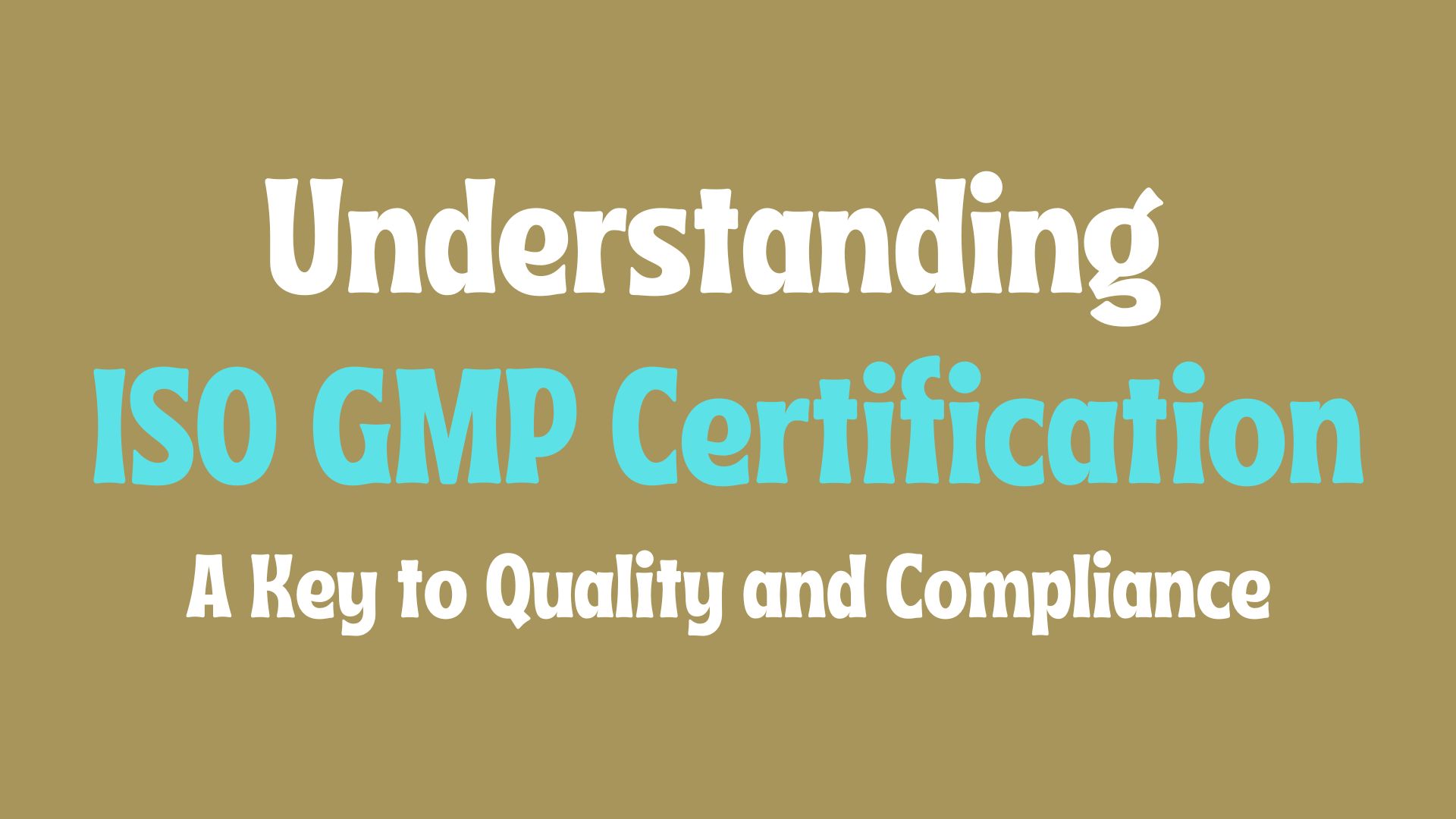Introduction
In today's globalized economy, ensuring the quality and
safety of products is paramount. For industries such as pharmaceuticals, food
and beverage, cosmetics, and dietary supplements, maintaining high standards of
production is not just a regulatory requirement but also a commitment to
consumer safety. One of the critical components in achieving this is adherence
to Good Manufacturing Practices (GMP). When coupled with the International
Organization for Standardization (ISO) certifications, GMP becomes a robust
framework that enhances quality, compliance, and trust. This article delves
into the significance of ISO GMP certification, its benefits, and its
implementation.
What is GMP?
Good Manufacturing Practices (GMP) are a system of
regulations, codes, and guidelines for the manufacture of food products,
pharmaceuticals, medical devices, and cosmetics. These practices are designed
to ensure that products are consistently produced and controlled according to
quality standards. GMP covers all aspects of production, from the raw
materials, premises, and equipment to the training and personal hygiene of
staff. Detailed, written procedures are essential for each process that could
affect the quality of the finished product.
The Role of ISO
Standards
The International Organization for Standardization (ISO)
develops and publishes international standards that ensure the quality, safety,
efficiency, and interoperability of products and services. ISO standards are
globally recognized and facilitate international trade by ensuring products and
services meet global benchmarks.
When GMP guidelines are integrated with ISO standards, the
resulting framework, often referred to as ISO GMP certification, provides a
comprehensive quality management system. Two critical ISO standards related to
GMP are:
- ISO 9001: This standard specifies requirements for a
quality management system (QMS) where an organization needs to demonstrate its
ability to consistently provide products and services that meet customer and
regulatory requirements and aims to enhance customer satisfaction.
- ISO 22716: This standard specifically applies to the
cosmetics industry, providing guidelines for the production, control, storage,
and shipment of cosmetic products.
Benefits of ISO GMP
Certification
1. Enhanced Product Quality: ISO GMP certification ensures
that products are consistently manufactured to high-quality standards, reducing
defects and ensuring product reliability.
2. Regulatory Compliance: Adhering to GMP and ISO standards
helps organizations comply with national and international regulations,
reducing the risk of legal issues and penalties.
3. Market Access and Competitive Advantage: Certification
opens doors to international markets by meeting global standards, giving
certified companies a competitive edge over non-certified ones.
4. Consumer Trust and Satisfaction: Certification
demonstrates a commitment to quality and safety, which can enhance consumer
trust and satisfaction, leading to brand loyalty.
5. Operational Efficiency: Implementing ISO GMP standards can
streamline processes, reduce waste, and improve overall operational efficiency,
leading to cost savings.
Implementation of ISO
GMP Certification
Implementing ISO GMP certification involves several critical
steps:
1. Gap Analysis: Conduct a thorough assessment to identify
gaps between current practices and ISO GMP requirements. This analysis helps in
understanding what needs to be changed or improved.
2. Management Commitment: Ensure that top management is
committed to implementing and maintaining the ISO GMP standards. Leadership
plays a crucial role in driving the necessary changes.
3. Training and Awareness: Educate and train employees at all
levels about GMP and ISO standards. Awareness and understanding are vital for
successful implementation.
4. Documentation and Procedures: Develop and maintain
detailed documentation and procedures for all processes affecting product
quality. This includes standard operating procedures (SOPs), quality manuals,
and records.
5. Quality Management System (QMS): Establish a robust QMS
that aligns with ISO 9001 and/or ISO 22716 requirements. The QMS should include
processes for quality planning, control, assurance, and improvement.
6. Internal Audits: Conduct regular internal audits to ensure
compliance with GMP and ISO standards. Internal audits help identify areas for
improvement and ensure continuous compliance.
7. Certification Audit: Engage with an accredited
certification body to conduct an external audit. The certification audit will
verify that the organization meets all the requirements of the relevant ISO GMP
standards.
8. Continuous Improvement: Maintain a culture of continuous
improvement by regularly reviewing and updating processes, training programs,
and documentation to ensure ongoing compliance and quality enhancement.
Challenges and
Solutions
Implementing ISO GMP certification can be challenging. Common
challenges include resistance to change, high implementation costs, and
maintaining consistent compliance. However, these challenges can be addressed
through effective change management strategies, securing management buy-in, and
investing in training and continuous improvement.
Conclusion
ISO GMP certification is a powerful tool for organizations
aiming to ensure high standards of product quality and safety. By integrating
GMP guidelines with ISO standards, companies can achieve a comprehensive
quality management system that not only meets regulatory requirements but also
enhances consumer trust and market competitiveness. Despite the challenges, the
benefits of ISO GMP certification—ranging from improved product quality and
regulatory compliance to operational efficiency and market access—make it a
worthwhile investment for any organization committed to excellence in
manufacturing practices.

